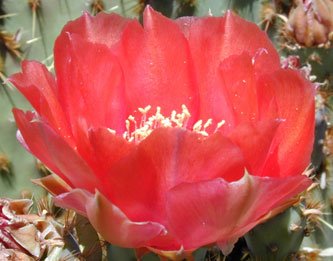 The Gateway Arch in St. Louis is one of those landmarks I could never remember if I had actually seen in person or if it was just so familiar from images. Today I established that I had definitely never seen it in person. It’s actually more impressive than the mental image I had of it. The surroundings, however, are pretty run down. I guess they left the old brick streets for atmosphere, and they certainly function to slow traffic down. The Mississippi River was over flood stage which meant that some of the streets were closed and so we were in a parade of tourists trying to get somewhere with one-way streets and closed streets and no feeling for where we wanted to go, which was actually rather amusing. Each car would come to an intersection, look around, and end up going the same way that the previous car had gone, bouncing slowly over the bricks, trying to figure out what we were here to see. Enough was enough, Al broke from the pack, found a spot where we could stop and get this photo of the Arch and then we were off again.
The Gateway Arch in St. Louis is one of those landmarks I could never remember if I had actually seen in person or if it was just so familiar from images. Today I established that I had definitely never seen it in person. It’s actually more impressive than the mental image I had of it. The surroundings, however, are pretty run down. I guess they left the old brick streets for atmosphere, and they certainly function to slow traffic down. The Mississippi River was over flood stage which meant that some of the streets were closed and so we were in a parade of tourists trying to get somewhere with one-way streets and closed streets and no feeling for where we wanted to go, which was actually rather amusing. Each car would come to an intersection, look around, and end up going the same way that the previous car had gone, bouncing slowly over the bricks, trying to figure out what we were here to see. Enough was enough, Al broke from the pack, found a spot where we could stop and get this photo of the Arch and then we were off again. This photo gives you an idea of the "quaint" streets in the riverfront area.

Fortunately it was Sunday and the Cardinals were playing out of town or it would have been a real mess. I’d forgotten what the old industrial cities look like, with all the abandoned factories, and their earnest efforts to revive the old downtown core with tourist activities. On the way back to the RV park, we saw the face of the new St. Louis driving through a huge light industrial park with modern buildings spread out on the bottomland with lots of lawns and huge parking lots and none of the grime and dirt of the inner city.
Our RV park is in St. Charles, which is one of the more successful reinventions of an old town into a tourist area. The man at the RV park desk referred to it as Williamsburg West and he wasn’t far off. The city has done an excellent job of making an historic Main Street district that is appealing and within a block of a lot of public parking. As you can see in the photo, it’s very popular on a weekend. The main claim to fame of St. Charles is that the Lewis and Clark expedition departed from here. The town also claims to be the oldest settlement west of the Mississippi and was an early state capitol.

The big attraction for us non-shoppers, however, is the Katy Trail, a 240-mile former rail route from St. Louis to Kansas City that has been transformed into a multi-use trail and a very long, skinny state park. We had previously ridden some of the middle sections and wanted to see the eastern terminus here in St. Charles. This is one of the numerous trailheads, across the street from our RV park.

The trail goes along the edge of historic St. Charles and passes through a park with a restored train depot before entering a heavily wooded corridor filled with birdsong, wildflowers and most-welcome shade. The trail is very flat in this part of the state and as you might be able to see in the photo, the surface is fine limestone, which packs pretty well although it still offers more rolling resistance than pavement. Since we’re not out to set any speed records, riding slowly through the trees is fine with us.
































